Family
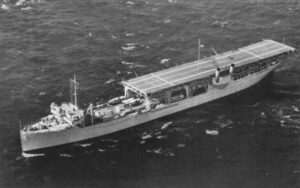 In 1912, the coal transport ship, Jupiter, was transformed, into the US Navy’s first aircraft carrier. The ship was recommissioned USS Langley (CV-1) and was the first aircraft carrier in history. As aircraft carriers go, we would have laughed about the look of this one. This recreated coal transport ship probably should have just stayed a coal transport, but then we wouldn’t have the aircraft carriers we have today, if Jupiter had not been transformed. It all had to start somewhere.
In 1912, the coal transport ship, Jupiter, was transformed, into the US Navy’s first aircraft carrier. The ship was recommissioned USS Langley (CV-1) and was the first aircraft carrier in history. As aircraft carriers go, we would have laughed about the look of this one. This recreated coal transport ship probably should have just stayed a coal transport, but then we wouldn’t have the aircraft carriers we have today, if Jupiter had not been transformed. It all had to start somewhere.
While USS Langley was the first aircraft carrier made, it was not the first to go down in battle. That “honor” goes to HMS Courageous, on September 17, 1939, only a couple weeks after World War II in Europe began. On that day, German U-boat, U-29, sunk the British aircraft carrier with 2 of the 3 torpedoes fired striking the unfortunate carrier. Courageous went down, taking 519 of her crew with her, thereby becoming the first aircraft carrier ever sunk by a submarine. The US Navy’s first aircraft carrier, the Langley, managed to survive until February 27, 1942, when it was sunk by Japanese warplanes (with a little help from US destroyers), and all of its 32 aircraft are lost.
The USS Langley was originally launched in 1912 as the naval collier (coal transport ship) Jupiter. After World 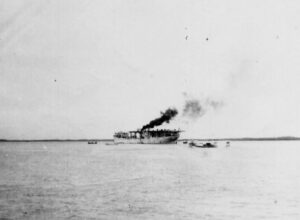 War I, the Jupiter was converted into the Navy’s first aircraft carrier and rechristened the Langley, after aviation pioneer Samuel Pierpont Langley. Uss Langley was the Navy’s first electrically propelled ship. It was capable of speeds of 15 knots. On October 17, 1922, Lieutenant Virgil C Griffin had the great honor of piloting the first plane, a VE-7-SF, from Langley’s decks. Planes had taken off from ships before, but this was a historic moment. The prestige was short-lived, and after 1937, the Langley lost the forward 40 percent of her flight deck as part of a conversion to seaplane tender, a mobile base for squadrons of patrol bombers.
War I, the Jupiter was converted into the Navy’s first aircraft carrier and rechristened the Langley, after aviation pioneer Samuel Pierpont Langley. Uss Langley was the Navy’s first electrically propelled ship. It was capable of speeds of 15 knots. On October 17, 1922, Lieutenant Virgil C Griffin had the great honor of piloting the first plane, a VE-7-SF, from Langley’s decks. Planes had taken off from ships before, but this was a historic moment. The prestige was short-lived, and after 1937, the Langley lost the forward 40 percent of her flight deck as part of a conversion to seaplane tender, a mobile base for squadrons of patrol bombers.
The Langley was part of the Asiatic Fleet in the Philippines when the Japanese attacked on December 8, 1941. Immediately setting sail for Australia, she arrived on January 1, 1942. On February 22nd, under the command of Robert P McConnell, the Langley, carrying 32 Warhawk fighters, left as part of a convoy to aid the Allies in their battle against the Japanese in the Dutch East Indies. Then, on February 27, the Langley parted company 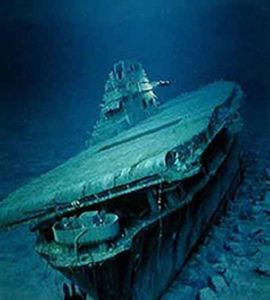 from the convoy and headed straight for the port at Tjilatjap, Java. About 74 miles south of Java, the carrier met up with two US escort destroyers. Then nine Japanese twin-engine bombers attacked the ship. Although the Langley had requested a fighter escort from Java for cover, none could be spared. She and the escort destroyers were virtually alone. The first two Japanese bomber runs missed their target, as they were flying too high, but the third time around they hit their mark three times. The planes on deck went up in flames. The carrier began to list, and Commander McConnell lost his ability to navigate the ship. In an effort to save his men, McConnell ordered the Langley abandoned, and the escort destroyers were able to take his crew to safety. Of the 300 crewmen, only 16 were lost. The destroyers then sank the Langley before the Japanese were able to capture it. It was necessary that they keep it out of Japanese hands. Better at the bottom of the sea that in the hands of the Japanese.
from the convoy and headed straight for the port at Tjilatjap, Java. About 74 miles south of Java, the carrier met up with two US escort destroyers. Then nine Japanese twin-engine bombers attacked the ship. Although the Langley had requested a fighter escort from Java for cover, none could be spared. She and the escort destroyers were virtually alone. The first two Japanese bomber runs missed their target, as they were flying too high, but the third time around they hit their mark three times. The planes on deck went up in flames. The carrier began to list, and Commander McConnell lost his ability to navigate the ship. In an effort to save his men, McConnell ordered the Langley abandoned, and the escort destroyers were able to take his crew to safety. Of the 300 crewmen, only 16 were lost. The destroyers then sank the Langley before the Japanese were able to capture it. It was necessary that they keep it out of Japanese hands. Better at the bottom of the sea that in the hands of the Japanese.
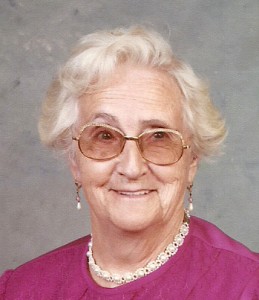 My grandma, Hattie Byer was a mother of nine children. She had her first child, my Aunt Evelyn Hushman on November 9, 1928, when she was 19 years old. She had her youngest child, my Aunt Sandy Pattan on October 26, 1945, when she was 36 years old. She had nine children in 17 years. That is a lot for any mom to handle, but Grandma Byer was well able to handle her children. She was a tiny woman, barely 5 feet tall…in her tall days, but her kids knew that her absence of height had nothing to do with her ability to discipline her kids. Messing with Grandma was not a healthy idea.
My grandma, Hattie Byer was a mother of nine children. She had her first child, my Aunt Evelyn Hushman on November 9, 1928, when she was 19 years old. She had her youngest child, my Aunt Sandy Pattan on October 26, 1945, when she was 36 years old. She had nine children in 17 years. That is a lot for any mom to handle, but Grandma Byer was well able to handle her children. She was a tiny woman, barely 5 feet tall…in her tall days, but her kids knew that her absence of height had nothing to do with her ability to discipline her kids. Messing with Grandma was not a healthy idea.
While Grandma could easily handle her nine children, she could also bring the sunshine and happiness into her home. Grandma got her kids together to do the chores, and while they were working, they would always sing, laugh, and tell jokes. Grandma had no problem making chores fun…well, as fun as possible. Nevertheless, the kids all have fond memories of those days when everyone was together at home doing chores and making happy memories. We all like to think back of our childhood with its fond memories. Of course, some family memories are better than others, and the memories that Grandma Byer created for her children were of the very best kind.
I remember spending time with my grandparents. 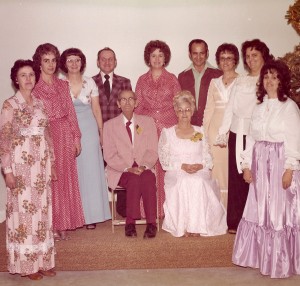 If you behaved yourself, you were going to have the best time, but I’m here to tell you that if you got out of line, Grandma was not worried about whether or not her children would be upset about her disciplinary tactics. Of course, we…the grandchildren…knew that if we got in trouble with Grandma…trouble with our parents automatically followed. The best we could hope for was that Grandma didn’t tell our parents what trouble we were in. It was our only hope of avoiding the inevitable “whooping” from our parents was to pray that Grandma kept our secret. Today is Grandma Byer’s birthday. Happy birthday in Heaven, Grandma. We love and miss you very much.
If you behaved yourself, you were going to have the best time, but I’m here to tell you that if you got out of line, Grandma was not worried about whether or not her children would be upset about her disciplinary tactics. Of course, we…the grandchildren…knew that if we got in trouble with Grandma…trouble with our parents automatically followed. The best we could hope for was that Grandma didn’t tell our parents what trouble we were in. It was our only hope of avoiding the inevitable “whooping” from our parents was to pray that Grandma kept our secret. Today is Grandma Byer’s birthday. Happy birthday in Heaven, Grandma. We love and miss you very much.
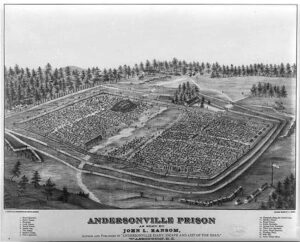
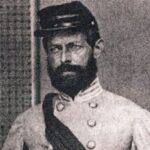 Andersonville POW camp was a Civil War era POW camp that was heavily fortified. It was run by Captain Henry Wirz, who was tried by a military tribunal on charges of war crimes when the war was over. The trial was presided over by Union General Lew Wallace and featured chief Judge Advocate General (JAG) prosecutor Norton Parker Chipman. The prison is located near Andersonville, Georgia, and today is a national historic site that is also known as Camp Sumpter. To me, its design had a somewhat unusual layout in that it had what is called a “Dead Line”. Some people might know what that is, but any prisoner who dared to tough it, much less try to cross it, found out very quickly what it was, because they were shot instantly…no questions asked. For that reason, prisoners rarely escaped from Andersonville Prison. The “dead line” was set up by the Confederate forces guarding the prison, to assist in prisoner control. The prison operated between February 25, 1864, and May 9, 1864. During that time, a total of 4,588 patients visited the Andersonville prison hospital, and 1,026 never left there alive.
Andersonville POW camp was a Civil War era POW camp that was heavily fortified. It was run by Captain Henry Wirz, who was tried by a military tribunal on charges of war crimes when the war was over. The trial was presided over by Union General Lew Wallace and featured chief Judge Advocate General (JAG) prosecutor Norton Parker Chipman. The prison is located near Andersonville, Georgia, and today is a national historic site that is also known as Camp Sumpter. To me, its design had a somewhat unusual layout in that it had what is called a “Dead Line”. Some people might know what that is, but any prisoner who dared to tough it, much less try to cross it, found out very quickly what it was, because they were shot instantly…no questions asked. For that reason, prisoners rarely escaped from Andersonville Prison. The “dead line” was set up by the Confederate forces guarding the prison, to assist in prisoner control. The prison operated between February 25, 1864, and May 9, 1864. During that time, a total of 4,588 patients visited the Andersonville prison hospital, and 1,026 never left there alive.
According to former prisoner, enlisted soldier John Levi Maile, “It consisted of a narrow strip of board nailed to a row of stakes, about four feet high.” The “dead line” completely encircled Andersonville. Soldiers were told to “shoot any prisoner who touches the ‘dead line'” “It was the standing order to the guards,” Maile explained. “A sick prisoner inadvertently placing his hand on the “dead line” for support… or anyone touching it with suicidal intent, would be instantly shot at, the scattering balls usually striking other than the one aimed at.” It was a risk the prisoners took if they chose to be anywhere near the “dead line” at all. Prisoner Prescott Tracy worked as a clerk in the Andersonville hospital. He said, “I have seen one hundred and fifty bodies waiting passage to the “dead house,” to be buried with those who died in hospital. The average of deaths through the earlier months was thirty a day; at the time I left, the average was over one hundred and thirty, and one day the record showed one hundred and forty-six.” The major threats in the prison camp were diarrhea, dysentery, and scurvy.
A sergeant major in the 16th Regiment Connecticut Volunteers, Robert H. Kellogg what he saw when he entered the camp as a prisoner on May 2, 1864, “As we entered the place, a spectacle met our eyes that almost froze our blood with horror, and made our hearts fail within us. Before us were forms that had once been active and erect…stalwart men, now nothing but mere walking skeletons, covered with filth and vermin. Many of our men, in the heat and intensity of their feeling, exclaimed with earnestness. “Can this be hell?” “God protect us!” and all thought that he alone could bring them out alive from so terrible a place. In the center of the whole was a swamp, occupying about three or four acres of the narrowed limits, and a part of this marshy place had been used by the prisoners as a sink, and excrement covered the ground, the scent arising from which was suffocating. The ground allotted to our ninety was near the edge of this plague-spot, and how we were to live through the warm summer weather in the midst of such fearful surroundings, was more than we cared to think of just then.”
After hearing the accounts of men who had the misfortune of being incarcerated in this horrific POW camp, I 
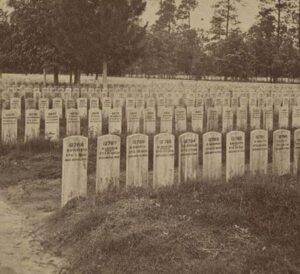 wondered if there might have been some changes had the camp been run in more modern times. Of course, there is no guarantee of that, since there has been mistreatment of prisoners-of-war in all wars, and the treatment ultimately falls on the people running the camp and the soldiers monitoring the prisoners. It is, however, a sad state of affairs when prisoners are starved, beaten, frozen, and otherwise mistreated in these camps. The point is to hold them, not murder them.
wondered if there might have been some changes had the camp been run in more modern times. Of course, there is no guarantee of that, since there has been mistreatment of prisoners-of-war in all wars, and the treatment ultimately falls on the people running the camp and the soldiers monitoring the prisoners. It is, however, a sad state of affairs when prisoners are starved, beaten, frozen, and otherwise mistreated in these camps. The point is to hold them, not murder them.


 These two have always been like “peas in a pod.” They were always together as kids. They were more like sisters than cousins. while these girls live in different states now, they have been trying to take an annual birthday trip, because they are 5 days difference in age, with Christina being 5 days older than Shai. They really love getting together and traveling to new places. So, Christina is flying out to see Shai for the weekend, and the girls plan to make a “Girls Weekend” of it.
These two have always been like “peas in a pod.” They were always together as kids. They were more like sisters than cousins. while these girls live in different states now, they have been trying to take an annual birthday trip, because they are 5 days difference in age, with Christina being 5 days older than Shai. They really love getting together and traveling to new places. So, Christina is flying out to see Shai for the weekend, and the girls plan to make a “Girls Weekend” of it.
Christina has been dealing with some food allergies and has been gluten free now for over a year now. Christina has not exactly struggled so much with her weight, but more with how she felt, as anyone who has food allergies knows and understands. While she wasn’t very much overweight, she is very happy with her current weight. Christina has been eating right and juicing, as well as going to the gym to work out. She is feeling really good about herself. Christina is a dental hygienist and assistant office manager at a dental clinic in Colorado Springs, Colorado. She works with great people and is good at her job. Christina has a strong faith in God, and that has helped her through so many of life’s challenges. Things are going very well these days.

Shai tells me that she has a really bad dog named Athena, and that she loves her very much. She loves having movie nights and living also living on her own. I’ll never forget those two girls together. They had such good times. They laughed and giggled, played pranks on each other, and teased each other. They were inseparable. Christina and Shai have been close for so many years now, and I can’t imagine the two of them any other way. I was always glad that they were good friends, because they are cousins by birth and friends by choice. Today is Christina’s birthday. Happy birthday Christina!! Have a great day!! We love you!!
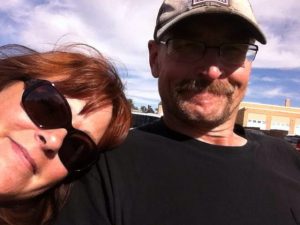
 The past year has been a difficult one for my brother-in-law, Ron Schulenberg. Following the death of his wife, Rachel, Ron found himself a single dad with a 13-year-old son. Being a single dad after having been married, while no different than being a single mother, is different in that the dad is used to being the main breadw-winner and not the nurturer of the children. To top it off, not only is he a single dad, but his son is grieving the loss of his mom. Becoming a single dad and having a grieving son is a lot to take on at one time, but Ron has handled it well. No, it hasn’t been easy, but his son, Tucker is his top priority, and he will do anything for him. It’s the mark of a great dad.
The past year has been a difficult one for my brother-in-law, Ron Schulenberg. Following the death of his wife, Rachel, Ron found himself a single dad with a 13-year-old son. Being a single dad after having been married, while no different than being a single mother, is different in that the dad is used to being the main breadw-winner and not the nurturer of the children. To top it off, not only is he a single dad, but his son is grieving the loss of his mom. Becoming a single dad and having a grieving son is a lot to take on at one time, but Ron has handled it well. No, it hasn’t been easy, but his son, Tucker is his top priority, and he will do anything for him. It’s the mark of a great dad.
Ron and Tucker have a lot in common. Even though there are years in between them, they like to do many of the same things. Tucker has wanted to do everything his Daddy was doing since he was two years old. That hasn’t changed. I have been very impressed to see Ron taking on all of the parent’s school responsibilities. So much of the time the “school stuff” falls to the mother, and often the dad feels out of place there. Nevertheless, whether he feels that way or not, Ron stepped up and while it may be outside of his comfort-zone, he is doing what he needs to do for his son. They have a great relationship, and Tucker really looks up to his to his dad. He has loved him since he was two, even before Ron legally adopted him. That was a great day for both of them. Tucker got the dad he needed, and Ron got the son he never had. Ron also got two great stepchildren, Cassie Franklin and Riley Birky; and three step-grandchildren, Lucas and Zoey Iverson, Jace Martin, and one on the way; (who Ron doesn’t think of as step at all). He feels very blessed, and they feel very blessed too.


Being a single parent is one of the hardest jobs in the world. It may not be all physical labor, but it is harder that many of the most rigorous physical labor jobs. Nevertheless, Tucker needs a parent who can do the things necessary to provide him a life of safety, security, and happiness. No one can promise no hardships, Ron and Tucker can attest to that, but Ron can doeverything in his power to make life happy for Tucker, and he does that quite well. Today is Ron’s birthday. Happy birthday Ron!! Have a great day!! We love you!!
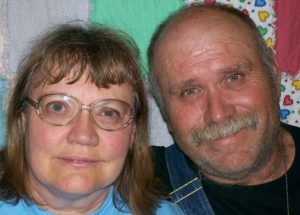
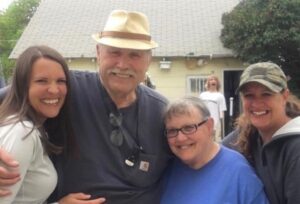 Quietly…behind the scenes, my sister-in-law, Debbie Cook has been on a journey to better health. Like most of us who have lost weight, Debbie didn’t want to say anything at first, because she wasn’t sure how this all would go. Now that she has been on the Keto diet since July, and is seeing success, the time has come to let the “cat out of the bag” as it were. Since July, Debbie has lost 35 pounds, and she is feeling so much better. Her confidence has soared, and she even feels like getting out sometimes. It has been a great help to her to have her daughters, Machelle Moore and Susan Griffith go along on this journey with her. She has worked very hard, and her daughters are very proud of her, as is the rest of her family.
Quietly…behind the scenes, my sister-in-law, Debbie Cook has been on a journey to better health. Like most of us who have lost weight, Debbie didn’t want to say anything at first, because she wasn’t sure how this all would go. Now that she has been on the Keto diet since July, and is seeing success, the time has come to let the “cat out of the bag” as it were. Since July, Debbie has lost 35 pounds, and she is feeling so much better. Her confidence has soared, and she even feels like getting out sometimes. It has been a great help to her to have her daughters, Machelle Moore and Susan Griffith go along on this journey with her. She has worked very hard, and her daughters are very proud of her, as is the rest of her family.
Debbie and her husband, Lynn have had a rough year in some ways. Like the rest of us, they have been on lockdown with the Covid-19 virus. That is over now, but unfortunately, they lost their beloved dog, Sparky during this last year. While that was hard, Debbie and Lynn decided to get a new puppy named Daisy. They needed a companion for their other dog, Izzy and so getting Daisy was very important. Daisy is full of spunk and a sweet puppy, but as puppies will do, she is defiantly keeping them busy. Losing Sparky was so sad, her little heart just gave out. Schnauzers are such loving dogs and such a big part of the family. Now, with Daisy in the family, Izzy has a friend, and she will surely enjoy learning about camping!!
Debbie decided that she needed to have some time outside the house, so she joined a club called the Red Hats in Powell. I had heard of the Red Hats before. They get together for fun outings like shopping, lunches, and attending craft fairs. It’s a nice way to do fun things together. They are a great group of ladies, and the club has been really good for Debbie. She is a very giving person, so it’s nice to see that some fun stuff is coming back to her.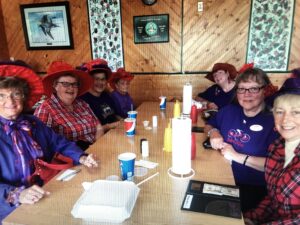
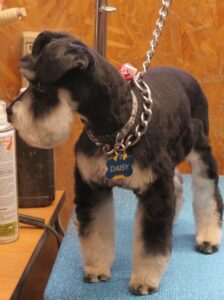
To celebrate Debbie’s birthday, and those of two grandchildren who have close birthdays, Easton on February 18th and Kaytlyn on March 3rd, they had a big family birthday party. One family tradition is to sing the birthday song as loud and obnoxious as possible (A tradition started by Debbie’s husband Lynn, hahaha). On a side note, Debbie and her family all think that her 69th birthday being on 2/22/22 is very cool!! Today is Debbie’s birthday. Happy birthday Debbie!! Have a great day!! We love you!!
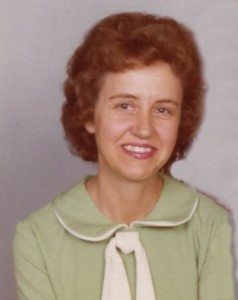
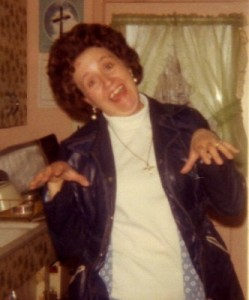 As my mom, Collene Spencer enters her seventh year in Heaven, even though there is no time in Heaven, it is the seventh year in Earth years. My sisters, Cheryl Masterson, Caryl Reed, Alena Stevens, Allyn Hadlock, and I all feel like we have grown so much over the years our parents have lived in Heaven. I think every child wants to make their parents proud of them, and even more so when their parents live in Heaven. We all feel like our parents are looking down at us from Heaven and that they truly love the people we have become. No, we are not perfect, but we do our very best, and we always try to act in a manner that we know they would be proud of. I believe that we have succeeded, and that our mom and dad are very proud of their girls.
As my mom, Collene Spencer enters her seventh year in Heaven, even though there is no time in Heaven, it is the seventh year in Earth years. My sisters, Cheryl Masterson, Caryl Reed, Alena Stevens, Allyn Hadlock, and I all feel like we have grown so much over the years our parents have lived in Heaven. I think every child wants to make their parents proud of them, and even more so when their parents live in Heaven. We all feel like our parents are looking down at us from Heaven and that they truly love the people we have become. No, we are not perfect, but we do our very best, and we always try to act in a manner that we know they would be proud of. I believe that we have succeeded, and that our mom and dad are very proud of their girls.
Mom was always the sunny person in our family, and she taught her girls to “keep on the sunny side” and to 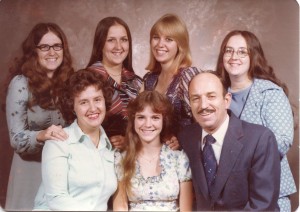 make laughter a staple in our lives. Some of my sweetest memories are those when Mom was being silly. She loved having a house full of laughter, and while five daughters meant five times the drama, it also meant five times the laughter, giggles, and silliness too. Mom would do everything in her power to bring that to pass in her home. Mom grew up in a large family during the Great Depression years, and while money was scarce, love and laughter were not. Mom’s family, her parents and eight siblings laughed together, worked together, and sang together. Her mom brought sunshine and happiness into their home, and in our family, my mom was the bringer of sunshine and happiness. They say you learn what you live, and in my mom’s case, that meant that because she watched her mom be the bringer of sunshine and happiness in her childhood…she made it her goal in her own family…and Mom did it quite well.
make laughter a staple in our lives. Some of my sweetest memories are those when Mom was being silly. She loved having a house full of laughter, and while five daughters meant five times the drama, it also meant five times the laughter, giggles, and silliness too. Mom would do everything in her power to bring that to pass in her home. Mom grew up in a large family during the Great Depression years, and while money was scarce, love and laughter were not. Mom’s family, her parents and eight siblings laughed together, worked together, and sang together. Her mom brought sunshine and happiness into their home, and in our family, my mom was the bringer of sunshine and happiness. They say you learn what you live, and in my mom’s case, that meant that because she watched her mom be the bringer of sunshine and happiness in her childhood…she made it her goal in her own family…and Mom did it quite well.
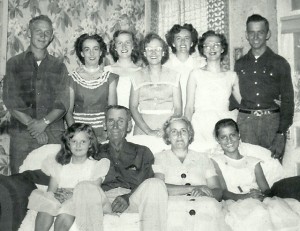
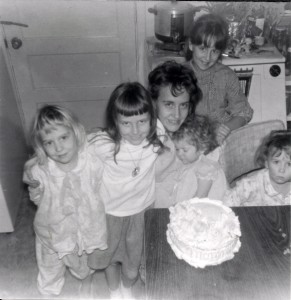 I miss those days of Mom singing “Keep on the Sunny Side” as she woke us up in the morning. I miss her silliness and her laughter. Mom delighted in life. Many things brought her joy and laughter. She was, I suppose, a kid at heart, and the funny stuff really tickled her funny bone. Mom made our home and our lives…fun!! She just did, and I will always see her in that light. It has been seven years today since my mom went home to Heaven. Mom, we love and miss you very much, and we will see you in the future.
I miss those days of Mom singing “Keep on the Sunny Side” as she woke us up in the morning. I miss her silliness and her laughter. Mom delighted in life. Many things brought her joy and laughter. She was, I suppose, a kid at heart, and the funny stuff really tickled her funny bone. Mom made our home and our lives…fun!! She just did, and I will always see her in that light. It has been seven years today since my mom went home to Heaven. Mom, we love and miss you very much, and we will see you in the future.
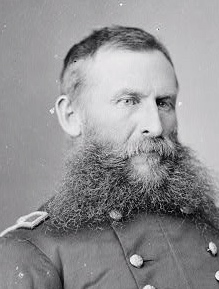 Not every great military hero was at the top of their class at military school. George Crook graduated 38th out of a class of 43 from the United States Military Academy in 1852. Crook was born to Thomas and Elizabeth Matthews Crook on a farm near Taylorsville, Montgomery County, Ohio (near Dayton). While his classroom career was not exemplary, he was a career United States Army officer, most noted for his distinguished service during the American Civil War and the Indian Wars. During the 1880s, the Apache nicknamed Crook Nantan Lupan, which means “Chief Wolf.”
Not every great military hero was at the top of their class at military school. George Crook graduated 38th out of a class of 43 from the United States Military Academy in 1852. Crook was born to Thomas and Elizabeth Matthews Crook on a farm near Taylorsville, Montgomery County, Ohio (near Dayton). While his classroom career was not exemplary, he was a career United States Army officer, most noted for his distinguished service during the American Civil War and the Indian Wars. During the 1880s, the Apache nicknamed Crook Nantan Lupan, which means “Chief Wolf.”
Crook was commissioned in the 4th Infantry and was first stationed in Northern California, until the outbreak of the Civil War. He was appointed colonel of the 36th Ohio Infantry and they were sent immediately to western Virginia, on September 12, 1861. He was promoted to brigadier general on September 7, 1862…less than a year later. He was put in command of a brigade of regiments from Ohio during the battles of South Mountain and Antietam, both part of the Maryland Campaign. Following that campaign, Crook was given command of a cavalry division in the Army of the Cumberland under General George H Thomas. He commanded that division through the Battle of Chickamauga. Crook was sent back to western Virginia and took part in General Ulysses S Grant’s spring campaign in the spring of 1864. During the campaign, Crook successfully commanded his brigade to victory against Confederate General A G Jenkins at the Battle of Cloyd’s Mountain. Crook was given command of the Department of Western Virginia which later became the VIII Corps under General Philip Sheridan, in August of 1864. Crook commanded his men throughout many of the battles of the Valley Campaign of 1864, including the battles of Third Winchester, Fisher’s Hill, and Cedar Creek. Crook was promoted to major general on October 21, 1864 and returned to the command of his department in Cumberland, Maryland. On February 21, 1865, while located in Cumberland Maryland, General Crook along with General Benjamin F Kelley were captured by a group of Confederate partisans under the command of Captain Jesse McNeill. On March 20, 1865, Crook was freed and placed in charge of a division of cavalry in the Army of the Potomac. He commanded his division until the surrender at Appomattox Court House.
Crook fought successful campaigns during the Indian wars, against several tribes, but later went on to speak 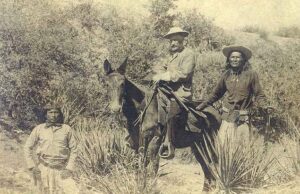 out against the unjust treatment of his former Indian adversaries. Crook was considered the Army’s preeminent Indian fighter during the Indian Wars. Even the Indians respected him. He was known to use two Apache scouts, Dutchy and Alchesay in his travels during the Indian Wars as well as his favorite mule, Apache. He died suddenly in Chicago in 1890 while serving as commander of the Military Division of the Missouri. Crook was originally buried in Oakland, Maryland, but in 1898, his remains were transported to Arlington National Cemetery, where he was reinterred. Red Cloud, a war chief of the Oglala Lakota (Sioux), said of him, “He, at least, never lied to us. His words gave us hope.” It was a great tribute.
out against the unjust treatment of his former Indian adversaries. Crook was considered the Army’s preeminent Indian fighter during the Indian Wars. Even the Indians respected him. He was known to use two Apache scouts, Dutchy and Alchesay in his travels during the Indian Wars as well as his favorite mule, Apache. He died suddenly in Chicago in 1890 while serving as commander of the Military Division of the Missouri. Crook was originally buried in Oakland, Maryland, but in 1898, his remains were transported to Arlington National Cemetery, where he was reinterred. Red Cloud, a war chief of the Oglala Lakota (Sioux), said of him, “He, at least, never lied to us. His words gave us hope.” It was a great tribute.
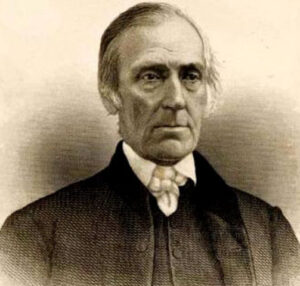
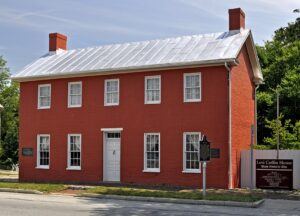 In any kind of slavery situation, there are always people who are willing to help those who are being held against their will. Just like during the Holocaust, when the slaves were in trouble, people came to their rescue by forming the Underground Railroad. One hero of the Underground Railroad was Levi Coffin. In the winter of 1826-1827, fugitives began to come show up at the Coffin house. It started out as a well-kept secret and just a few slaves came, but the numbers increased as it became more widely known on different routes. These slaves were running away from bondage, beatings, and limitless working hours. Their lives were little better than death, and they knew they had to escape or die.
In any kind of slavery situation, there are always people who are willing to help those who are being held against their will. Just like during the Holocaust, when the slaves were in trouble, people came to their rescue by forming the Underground Railroad. One hero of the Underground Railroad was Levi Coffin. In the winter of 1826-1827, fugitives began to come show up at the Coffin house. It started out as a well-kept secret and just a few slaves came, but the numbers increased as it became more widely known on different routes. These slaves were running away from bondage, beatings, and limitless working hours. Their lives were little better than death, and they knew they had to escape or die.
When they arrived at the Coffin house, they were welcomed in and given shelter, they would usually sleep during the day, and then they were quickly forwarded safely on their journey. Neighbors who had been too fearful of the penalty of the law to help at first, saw how well the Underground Railroad was being run and soon they felt encouraged to help. A big part of the change of attitude came from the fearless manner in which Levi Coffin acted and the success his efforts produced. The neighbors began to contribute clothing the fugitives and aid in forwarding them on their way. They were still too afraid to shelter them under their own roof, so that part of the work fell to the Coffin household. There were the “content to watch” people, who obviously wanted to see the work go on…as long as someone else took the risk. And of course, there were those who told Levin Coffin he was wasting his time. They tried to discourage him and dissuade him from running such risks, telling him that they were greatly concerned for my safety and monetary interests. They tried to convince him that continuing this risky business could damage his business and possibly even ruin him. The told him he could be 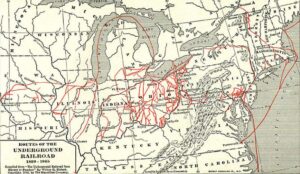 endangering himself and his family too. I suppose it could have, because there are always those who sympathized with the slave-owners, but Levi Coffin could not stand to see the horrible treatment the slaves endured. He had to do something, no matter what it cost him, just like those who helped the Jews during the Holocaust.
endangering himself and his family too. I suppose it could have, because there are always those who sympathized with the slave-owners, but Levi Coffin could not stand to see the horrible treatment the slaves endured. He had to do something, no matter what it cost him, just like those who helped the Jews during the Holocaust.
Levi listened to these “counselors” and then told them that he “felt no condemnation for anything that I had ever done for the fugitive slaves. If, by doing my duty and endeavoring to fulfill the injunctions of the Bible, I injured my business, then let my business go. As to my safety, my life was in the hands of my Divine Master, and I felt that I had his approval. I had no fear of the danger that seemed to threaten my life or my business. If I was faithful to duty and honest and industrious, I felt that I would be preserved and that I could make enough to support my family.”
Even some of those people who were opposed to slavery, felt it was very wrong to harbor fugitive slaves. They figured that the slaves must be guilty of some crime, such as possibly killing their masters or committed some other crime in their escape attempts…making those who helped them an accomplice to the “crime” they were supposedly guilt of. Oh, they had every imaginable objection, and figured it was, at the very least, their duty to make their thoughts known. Once they had voiced their objections, their conscience was clear, and if Levi met with a tragic end, they could at least say, “I told him!!” Levi, in return asked one such “neighbor’s keeper” neighbor, if he thought the Good Samaritan stopped to inquire whether the man who fell among thieves was guilty of any crime before he attempted to help him? He said, “I asked him if he were to see a stranger who had fallen into the ditch would he not help him out until satisfied that he had committed no atrocious deed?” I suppose it was a “crime” to escape their masters, but then some laws should not be laws, and slavery certainly falls into that category. Levi Coffin had to follow his spirit and do what he felt God would expect of him, and in 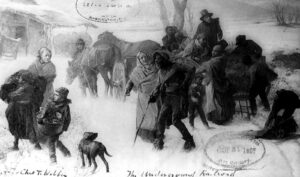 the end, he saved many lives.
the end, he saved many lives.
Many of Levi’s pro-slavery customers left him for a time, and sales were down. For while his business struggled, but Levi knew that he was doing God’s will, and so God would take care of him and his business. Before long, new customers replaced those who had left him. New settlements were rapidly forming to the north and Levi’s own was filling up with emigrants from North Carolina and other States. His trade increased and his business grew. He says of this time in his life, “I was blessed in all my efforts and succeeded beyond my expectations.”
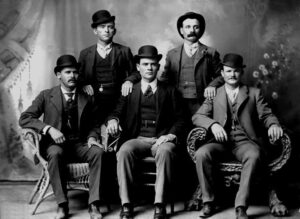 The American cowboy hat. Anyone who knows anything about the Old West knows about the Stetson cowboy hat, and every great cowboy wore them, right? Wrong. The truth is that in the Old West, most men wore a Derby hat. If you’ve seen the movie, Butch Cassidy and the Sundance Kid, then you have seen a more realistic picture of the Old West.
The American cowboy hat. Anyone who knows anything about the Old West knows about the Stetson cowboy hat, and every great cowboy wore them, right? Wrong. The truth is that in the Old West, most men wore a Derby hat. If you’ve seen the movie, Butch Cassidy and the Sundance Kid, then you have seen a more realistic picture of the Old West.
The myth of the cowboy hat did come about from the hat that was created by John Stetson, and while it was a classic, it didn’t actually come into play until the very end of the 19th century, not the early part like most people think. The Stetson cowboy hat was first introduced in 1865, but it just didn’t take off like John Stetson had hoped. The cowboy hat was based somewhat on a Spanish design, and thr rumor was that a random cowboy saw Stetson’s at and paid him $5.00 for it. After that, it was said to be all the rage.
The truth is vastly different. I don’t know if a cowboy bought that first cowboy hat for $5.00 or not, but while we think that the Derby hat or the top hat were only worn by the bankers, businessmen, or the very rich, that belief is wrong. The early cowboys liked the derby hat best, and those who did not like the Derby usually wore a top hat or a hat associated with their professions, like a conductors cap. The Derby was also known as the Bowler hat, with many notorious cowboy criminals such as Butch Cassidy and Will Carver wearing them. Even those who weren’t criminals liked the Derby hat on the frontier, because they stayed on in windy conditions and protected the cowboys from the sand. I think anyone who has ever had a hat or cap blow off in the wind can relate 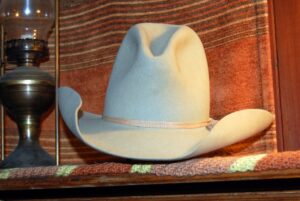
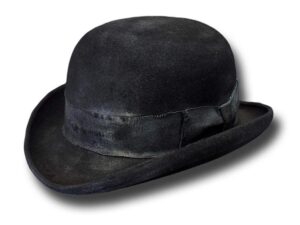 to that.
to that.
While most cowboys today, and even those who just like “all things country” prefer the cowboy hat these days, and the manufacture of cowboy hats is big business these days, they certainly didn’t start out that way. It’s hard for me to picture cowboys in a Derby hat, but history would prove that the Derby hat was, in fact, what they wore.

